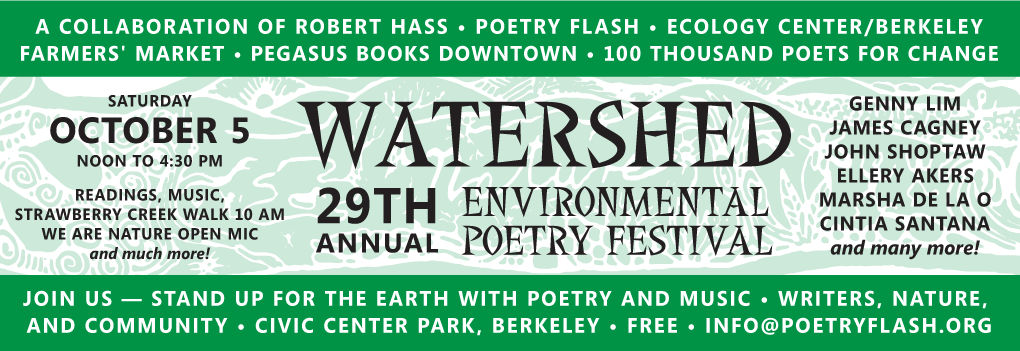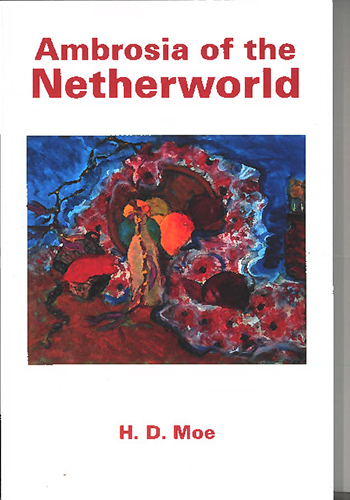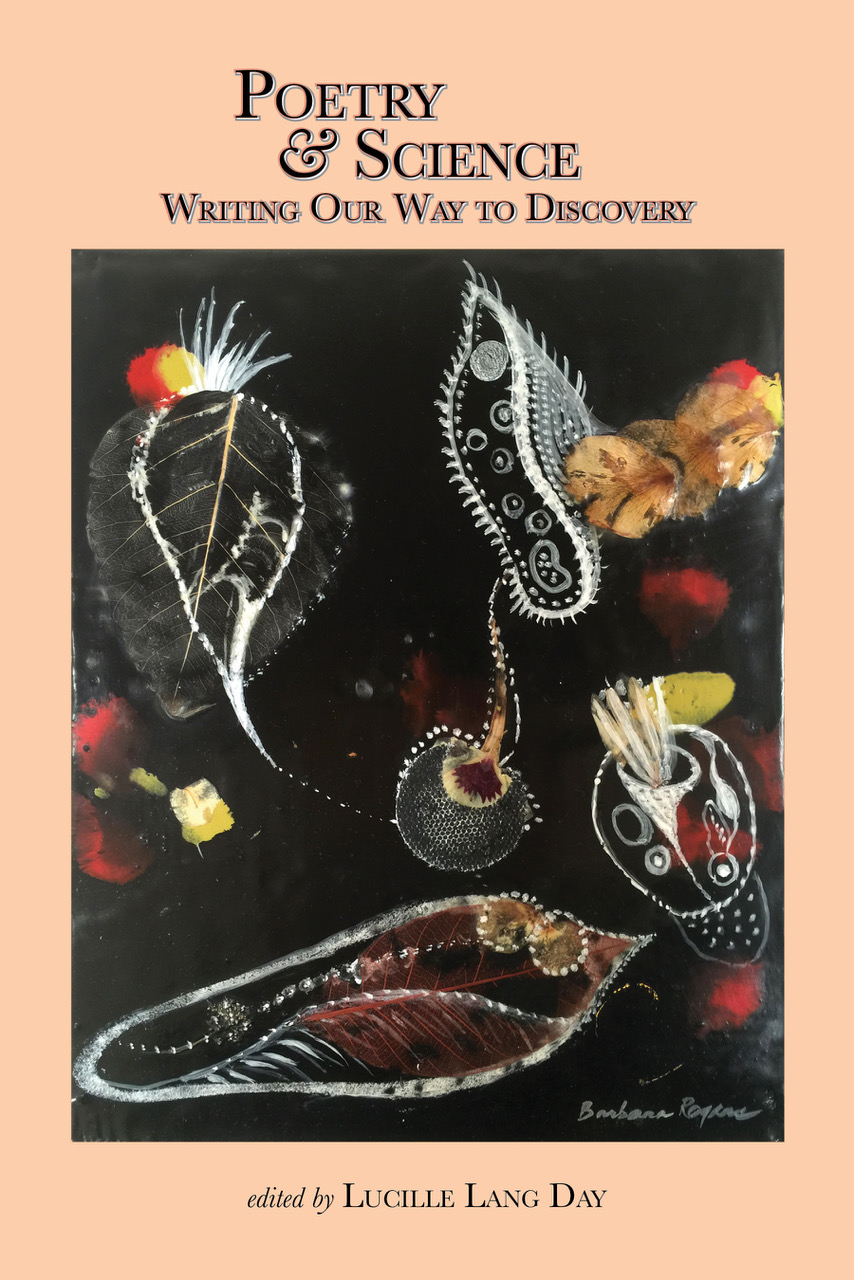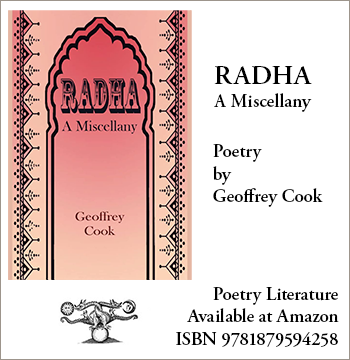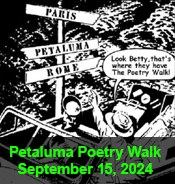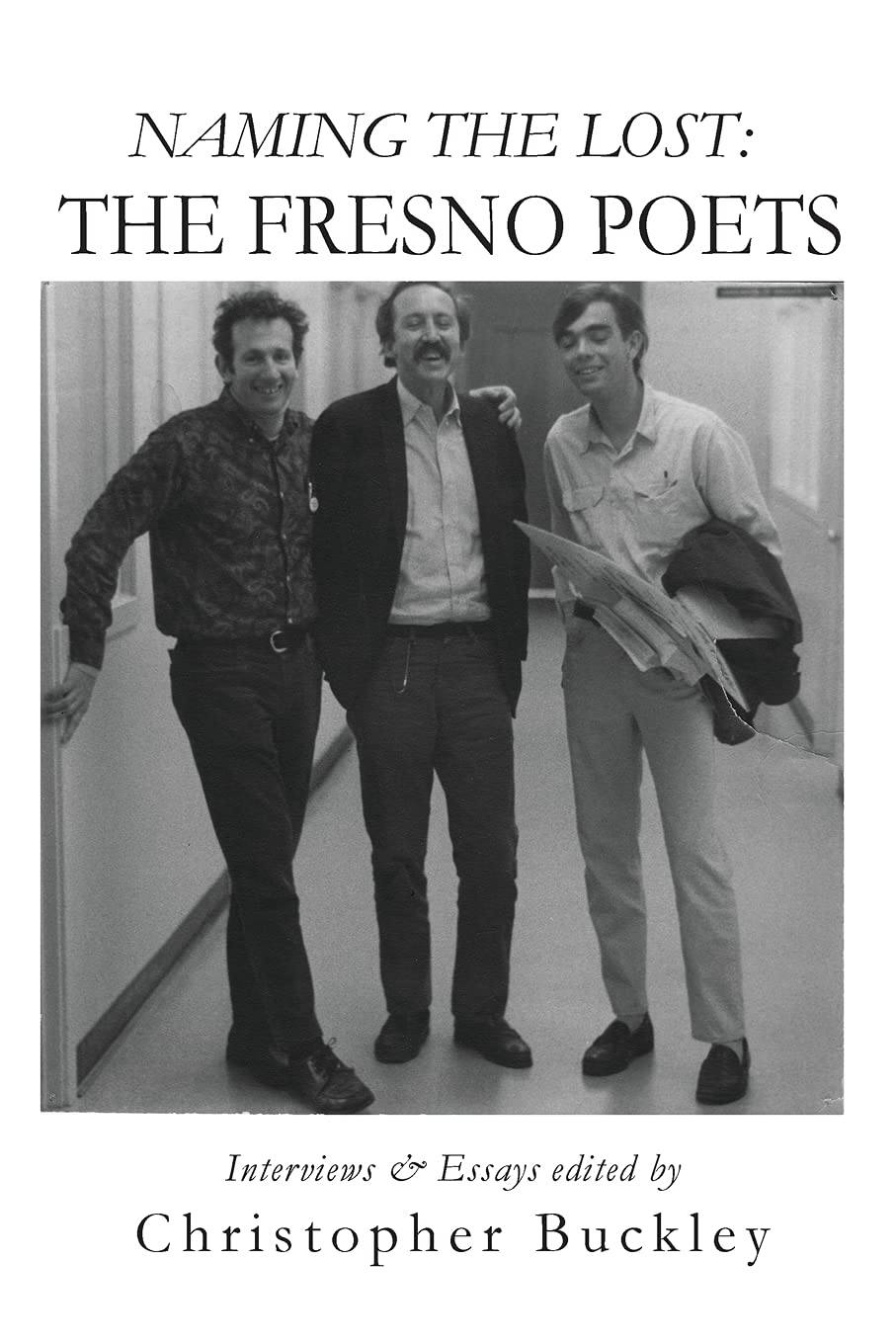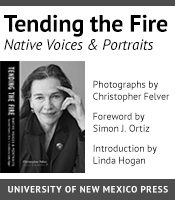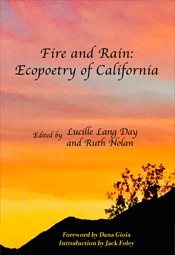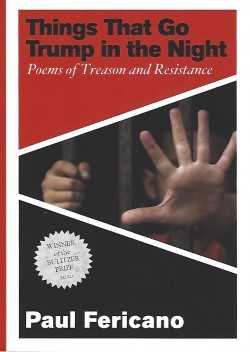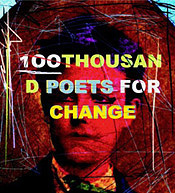
At the Prison a Steel Cage Opens
by Rose Black
Open closed open. Before we are born, everything is open
in the universe without us. For as long as we live, everything is closed
within us. And when we die, everything is open again.
Open closed open. That's all we are.
(Yehuda Amichai, from "I Wasn't One of the Six Million:
And What Is My Life Span? Open Closed Open")
JUNE 6, 2014. TODAY will be my first visit to Salinas Valley State Prison (SVSP), where I'm to observe Nancy Gomez teach the poetry workshop started in 2012 by prison psychologist Ben Bloch and poet Ellen Bass. If I choose to commit, I will be joining the teaching team soon.
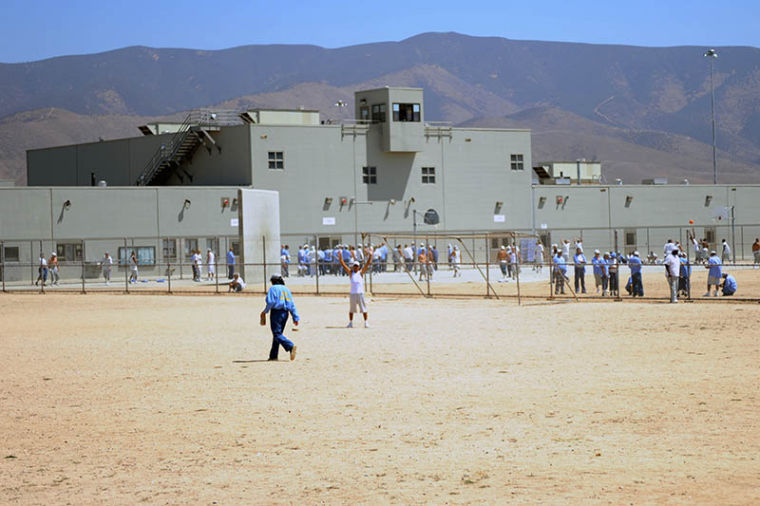
From my home in Oakland it's a two-hour commute to the prison, five miles north of the city of Soledad in Monterey County. As I drive south on 880, then continue down on 101, I notice my thoughts follow a certain sequence: as the traffic thins, and the shopping malls, car dealers, business and industrial parks fall rapidly behind me, and as the mountains and clear sky begin to emerge and expand, I become increasingly aware of a lightening of spirit, a feeling of spaciousness and freedom, of holiness and wholeness, which brings me great joy.
Months later, I feel that same joy, as I read the piece Jesse Garza has just written in the SVSP Friday poetry workshop:
I saw the most beautiful sight visibly
possible to anyone, even to a prisoner…
that everything stood still, sort of frozen in time,
there was a most beautiful sunset;
I saw the sun rising up from the ground far
to my right, in the horizon, its colors so vivid and
brightly going up, from salmon to pink & a lighter
pinkish, still rising, into orange & then a lighter
orangish that flew quickly into yellow and, on
into white, and up into light blue as it sped faster up
and into dark blue and round above it turned midnight;
I say that it sped and went faster up high, because
you see…I was speeding my own self;
inside of an Ambulance, on the freeway…
and so, over to my left, that blue midnight turned dark;
but yet, it too looked so very beautiful…
for up in the sky the moon was full and so bright,
and I could see in its pretty face that it too
seemed to smile down at me as I lay,
as I sped by, in the back of that Ambulance…
I wish I could describe that really beautiful sight.
I really wish I could.
I want to learn in the Writing/Poetry Group Class
how to write and put that into words. Oh, if only my
heart could speak that love in the sky, such a beautiful sight.
(Jesse Garza, 10/10/14)
Perhaps to open is our great challenge. Open Closed Open.
*
AS I CONTINUE MY COMMUTE that first day I think about beginnings, about origins and great migrations of human beings, and how basic needs of sustenance and safety can be met by connection with the earth and with each other.
I know that beauty such as this must always be accompanied by its companion, beauty's shadow, and as the dark green and bright red produce of Salinas Valley begins to come into view, the wide fields of strawberries, lettuce, tomatoes, peppers, artichokes, cauliflower, and wine grapes, my thoughts turn to loss and loneliness, to injustice, and to the indigenous peoples who once inhabited this land. I can't help but ponder Big Ag, big everything.
So in a way I am prepared as I enter the sprawling grounds of this three-hundred-acre state prison that houses close to 3,700 men. I drive a long, winding route, where I'm stopped at two checkpoints; pass a flat straight road lined with shedding eucalyptus trees; pass fenced, barbed-wired spaces covered with weeds and occasional clumps of scraggly palms; pass jumbled fleets of vehicles, some rusted, broken-down; pass low, ramshackle bungalows and corrugated metal Quonset huts, apparently abandoned and randomly scattered; pass several pinkish four-tier buildings, shabby and straight-lined. These buildings, clearly old, appear to be abandoned also, but later I learn that this complex is part of the still-active Soledad CTF (Correctional Training Facility), originally Soledad State Prison. Dating back to 1946, it is one of California's original twelve prisons.
I eventually come to the huge parking lot reserved for prison employees and visitors, and then, in the blistery heat, I walk towards the cinderblock snack bar, where I will meet Nancy and Ben, whose role in the poetry workshop is that of "sponsor." The snack bar exterior is painted a pinkish-beige, perhaps to blend with the desert-like landscape around it, but it reads flat and dull against the panorama of the surrounding earth and mountains.
Swoossh blasts the fan as I push through the door. Bright smiles on the big screen urge me to buy this pillow, it will make me happy, right now, limited offer. At a Formica table a man and two women, probably prison staff, lean towards each other, their hands flying in the air. Beside the door, several hefty guards stand in green-brown uniforms: cuffs, batons, flashlights, pepper spray, mace, and one-and-a-half pounds of keys hang from their duty-belts.
Watched by the men in the towers, Ben, Nancy, and I begin our walk through the buildings, buzzered cages, electric fences, and barren yards off limits to prisoners, towards the locked-up place within the locked-up place, towards the Special Needs Yard program (SNY), in D-Block.
These are things that Ben Bloch told me: The SNY programs are generally for gang dropouts, sex offenders and high-profile cases who may need protective custody. Sex offenders need protection not only because they are 'marked', for the obvious moral reasons, as targets. As Ben understands it, the need for protection also has to do with prison gang politics: gangs establish rules as a way of differentiating themselves from one another and establishing codes of behavior.
While the SNY program is also meant for gang dropouts, ironically there has sprung up a number of SNY gangs who, so to speak, run things. The Independent Riders are the ones most prominent on SNY yard. There are also the Two-Fivers, the Gay Boys, and the Northern Riders.
An interesting question is why suddenly the California Department of Corrections and Rehabilitation (CDCR) has now decided to allow people to migrate to SNY yards en masse—instead of having them go through a debriefing process where they name names, etc. This dilution of intent makes the whole SNY designation kind of meaningless. Some speculate that it just helps make a case for more yards to be built, more officers to be hired.
*
BEN AND NANCY ARE WALKING along a path bordering the exercise yard, with me behind them. Down, down, everybody down! the guard in the tower yells through his megaphone, then I hear the pop pop pop pop of tear gas (gunshots, I wonder?) which forms a cloud over the area. The prisoners freeze, exactly as they are, some on their stomachs, some on their sides, some with arms outstretched, as if they were suddenly caught and paralyzed by some ancient curse.
The guard yelled everybody. Should I freeze as well? Heart pounding, I duck into a doorway. No one knows exactly what has happened, and everyone is confused. We must wait and see what the consequences of this incident will be. Eventually we are told it was a skirmish in the yard, and that the entire prison is on lock-down: all classes canceled.
Ben said at the time that fights happen several times a week, but if fewer than four inmates are involved, the fights are viewed as a minor occurrence; the fighters in most cases are allowed to sign an agreement (curiously called a 'marriage chrono') and stay on D-yard rather than being moved to Administrative Segregation (Adseg), though they both get a disciplinary write-up. (On 7/5/14 Vice News reported that there had been approximately 700 violent incidents a year at SVSP, and that they were on track to expect the same number in 2014. That breaks down to approximately two violent incidents a day.)
Instead of the classroom, we head to Ben's office. Ben, Nancy, and I spend our time collating and stapling the EOP Pulse, which is a monthly newsletter for the two hundred inmates in the Enhanced Outpatient Program (EOP). Since Ben began working at SVSP in 2008, he has run three groups related to writing: two for poetry, and one that publishes the Pulse.
In the August 2015 Pulse, Friday poetry workshop regular Joseph Weldin published "Scroungy, Part 1," a piece originally written for the workshop. It looks like "Scroungy" is turning into a novel, and his story will continue as a serialization in subsequent issues of the Pulse.
Scroungy, Part 1
I've no mother, you see? I've been told she abandoned me.
I'm Scroungy, you see, the small peasant boy now of Shy Moons Town Streets. I've no real home, no known kinfolk. Had only Buck.
Ol' Widow McMallard, she'd only beat me. And when drunk she'd rent me, to Pirate Sack, down at the Sea Ports Barrel Rums Inn. He'd only strap me. Then have me sweep and clean the latrines. It's even been said he ate my stray dog, Buck. "Shucks!" he said as he wiped his eyes. "Why? Ol' Buck. He wasn't much?!"
Once a week I'd go work for Miss Madam Esther Rose. She runs a boarding house over towards the Oil Lamp district, shortly past the cobble stone bridge, where I tend to empty or broken lamps. Then I was bathed and fed, then given a Big Esther's wet red kiss and a cheeky red pinch. Then off to the streets I'd run, acquiring odd jobs and messages I'd run.
I'd clean this here Stable house, you see, for a place to sleep. Come morning I'd give the mares their oats and feed. Of course, there's the free sour apple tree out back, he said, as he displayed his squinched-up nose.
Now, every Sunday I'd race over to Father O'Riley's small steeple church just right outside of town, just this side of the huge maple tree. I'd love to climb or run around. I tend to the wind-torn fence, you see, around the small cemetery. Once I'd finished I'd head to the Chapel's back door where Mrs. O'Riley treats me to a slice of her chewy Irish chocolate cake and buttermilk.
While she'd read to me from her Good Book, she rubbed my head.
Suddenly, with his head held high, proudly he says, "I've no shame. I'm Scroungy, you see. No last name. I haven't had it so bad." With a quick wink.
(Joseph Weldin, 5/8/15)
Mr. Weldin's enthusiastic presence in the group is contagious, and it is always a treat to see his work. The four "Scroungy" chapters I've seen so far depict a strange and colorful world from a bygone era, inhabited by complex, quirky characters.
*
BEN UNDERSTANDS the importance of arts programming to the inmates under his care. He tells me that there are a few different kinds of programming available to the maximum security inmate in California, depending on his or her situation. "Programming" means any supervised activity not administered directly by custody.
When Ben applied for a grant from Poets & Writers in 2011 to bring a guest poet into Salinas Valley State Prison, there was no such program in D-Yard where he works. The Arts-in-Corrections (AIC) program continued for decades within the California Department of Corrections with support from the California Arts Council, as well as through agency support and general assistance. But in 2003 a ninety-four percent cut was made to the state's arts budget and in 2010 AIC was cut out of the state budget entirely. According to the CDCR, "there are areas of arts activity within CDCR facilities that currently fall under the categories of education, rehabilitation, recreation, and community programs, but are not directly tracked as 'Arts-in-Corrections' programs, and are not extensive by any means. Many that currently exist do so simply because of the dedication of CDCR staff members who recognize the benefits of Arts-in-Corrections, or because of equally dedicated volunteers and community organizations who work with CDCR staff to provide programming" (California Arts Council 2014). Ben's program at SVSP was one of these staff and volunteer efforts.
Arts-in-Corrections (AIC) was originally funded by the California Arts Council until 2003, when a ninety-four percent cut was made to the state's arts budget. Starting in July 2014, after the start of the SVSP program, CDCR again has allocated $2.5 million to return Arts-in Corrections to state prisons. A new and important partnership between the California Arts Council and the CDCR is at the heart of the new AIC (Arts in Correction).
The renewed AIC program offers state prison inmates instruction in creative writing, poetry; painting, drawing, and other visual arts; theater; storytelling; music, and media arts. The William James Association (WJA) of Santa Cruz is one of the providers under the new program. WJA has a thirty-seven-year history as the principal contractor for AIC, and currently has programs in twenty of California's thirty-two prisons. WJA's partner fine arts organizations are: The Actor's Gang, Alliance of California Traditional Artists, Fresno Arts Council, Muckenthaler Art Center, Strindberg Actors Theater.
Jack Bowers, Chairman of the William James Association, for twenty-five years has directed the Arts-in-Corrections program at Soledad State Prison, where he has taught music theory and jazz and nurtured a marching band program of twenty bands. Bowers sums up the history and purpose of the William James Association's work in the prisons:
The Prison Arts Project of the William James Association [begun in 1977] was the basis for the Arts-in-Correction Program, that brought fine arts programming into all 33 of California's prisons during the 80s and 90s. Arts-in-Corrections saved many lives by providing a sanctuary in the prison, away from the craziness of the wings and the yards, a place where prisoners could relate to each other as artists, poets, and musicians, not as gangsters or power brokers…. The Arts in-Corrections Project serves all Californians, not just those in our prisons. At some point, the great majority of the men and women now in our state prisons will return to our communities. Research has shown that those who have participated in fine-art classes will return to us as more compassionate, more self-disciplined and more motivated individuals. Professor Larry Brewster has discovered through his research that the fine arts can have an incredible impact on individual participants. "There is evidence that prison fine arts programs provide authentic learning experiences that engage the minds and hearts of the incarcerated. Prison art program evaluations in the United States and elsewhere in the world have found strong correlations between arts education and improved work ethic, self esteem, creativity, intellectual agility, motivation, self-confidence, emotional control, and an ability to work with others. Further, interdisciplinary research shows cognitive, social and personal competencies are cultivated through arts instruction and practice. The findings of this research is further evidence of the transformative power of the arts."
But an official arts program, with a payroll for teachers, teaching materials and a vetted curriculum, is not the only way art can be taught inside the walls. Maximum security prison schools, vulnerable to budgetary and policy pressures and run inconsistently, if at all, are limited to teaching language and math skills—though some inmates have worked toward higher degrees through correspondence courses. San Quentin, for instance, is an example of a prison that has a college degree program (Gonzalez, 2011). Mental health groups, on the other hand, are a requirement, mandated at even the harshest facilities. And it's in the context of such mental health treatment that the humanities and arts, including the reading and writing of literature, can often find a place.
Since the return of Jerry Brown in 2011, renewed attention has been paid to some of the problems with California's bloated correctional system, including problems with lack of access to arts and educational services. Governor Brown approached the head of Mental Health in CDCR about the future of arts in the prison. Administrators accepted the idea of setting up workshops through Mental Health paid for by outside grants, the way a lot of the programming had been offered through Arts-in-Corrections. Nevertheless, Ben Bloch's 2011 proposal for a program at Salinas Valley State Prison, once it was granted by Poets & Writers, took more than a year to be approved within the prison. Ben has observed basic resistance, deeply ingrained and probably automatic, to anything that looks like a change in the order of things; he points out that there are layers and layers of bureaucracy and resistance to change built into a system like this, a system built on fear. Ben watched the memo he'd written go back and forth between his bosses and the administration, the Warden, the Captain of the yard and others many times, often lost or ignored for months on someone's desk. After a proposal period that involved a lot of waiting and reminding, a course of six poetry classes was approved, and in September of 2012, the workshop finally began.
*
WHEN WE FINISH our work, Ben takes us on a brief tour of the prison: a yard with wire cages; a man standing in a cage in hot sun in his underwear; the dark inside of D-block, its small cells in a row, (two men to an eight by twelve cell); its separate area for Adseg. Administrative Segregation is basically a jail within the prison, where people come out of their cells much less, one or two hours a day as opposed to six, and where they only get monthly phone calls, no contact visits, etc. This is not synonymous with solitary, as many in Adseg are double-celled. We don't want to stare at the men as if they are animals in a zoo, so I try not to notice the man in his cell glaring outward, towel around his waist, thick fingers curled around bars. I am told that he is waiting to be taken to his shower.
That day, Ben gives me a gift. While walking me out through the endless maze of yards and checkpoints, he suddenly stops and points. "Do you see those mountains, Rose? Those are the mountains Steinbeck describes on the first page of East of Eden: to the east the Gabilans, to the west the Santa Lucias, mountains of morning and mountains of night. This prison lies between, on the floor of a valley that was once the bottom of the sea." Ben the psychologist is also a poet, a poet who understands metaphor, polarity and paradox. I carry the metaphor of those mountains with me as I struggle to understand what this prison is all about, and the intense contrast of emotions I feel every time I teach there: mountains and valley, shadow and light, free and enclosed, good and evil, strong and weak. Ever present also, Steinbeck's themes of integrity, corruption, disenfranchisement, rebellion. And hunger: the prisoners' hunger, the prison staff 's hunger, society's hunger, and, my own.
And this I believe: that the free, exploring mind of the individual human is the most valuable thing in the world. And this I would fight for: the freedom of the mind to take any direction it wishes, undirected. And this I must fight against: any idea, religion, or government which limits or destroys the individual. This is what I am and what I am about.
(from John Steinbeck, East of Eden)
In fact, the poetry workshop at SVSP frees minds, allows individuals to explore, and small miracles do happen there—the grounding and growing, the caring and confidence, the my-own-voice, the whatever-is-opposite-of-prison—miracles not only for the workshop participants, but also for the teachers, who well understand what a privilege it is for them to be there.
It has something to do with the power of creativity and the transformation that takes place when writers need to write, and then are able to transcend solitude and a culture of posturing and violence to gather and truly hear one another. Open closed open.
*
OPENED IN 1996, SVSP was one of the many prisons built in response to California's burgeoning prison population. This growth was due to many factors such as the state's 1993 Three-Strikes law. Under this law, someone who committed two felonies defined as serious could be sent to prison for twenty-five years by committing a third felony of any type—even some forms of shoplifting. In 2012, Proposition 36 modified that policy, to require that a third strike be a serious or violent felony.
California's original Three-Strikes law had been the toughest of its kind in the nation. Thousands of jobs were created to build new prisons and also to staff them.
In 2009, the U.S. Supreme Court ordered California to reduce its prison population to 137.5 percent of institutional design capacity. A mixture of reforms, inmate transfers, and new construction brought the population below the mandated threshold. As of March 2015, it stood at 112,300, or 135.8 percent of capacity.
*
EACH TWO-HOUR WORKSHOP is shaped as a chance to share, a chance to be exposed to great traditions and examples of poetry—and an opportunity to write new work. Instructors bring in works on varied themes. Walls, the theme of one of my own workshop lessons, included poems about walls written by incarcerated men around the world. The class was then invited to write about the walls they knew, real or imagined. Rodolfo Anderson, whose pen name and nickname is Diamond, wrote the following poem, most certainly an example, among other things, of whatever-is-opposite-of-prison:
A Wall Which Is Worn
I sit and stare,
at a wall which is worn, influenced by abandonment,
family pictures which are torn.
Because I'm all man,
old posters which are porn. Then right before my eyes,
an abstract theater begins to form.
Delicate curtains made of silk,
in the upper corners they hang, their tailor is a critic,
her review is bitter—like a widow's fang.
I continue to watch,
until its story unfolds, then the wall begins to talk,
it announces— "Look, Behold…!"
*Graffiti etched in stone~
*Names of poets unknown~
*Artists' pens roam.
A new perspective is born,
until now—its language foreign, on a wall—which is worn.
From a collage of profanity,
an eloquent motif blends, the purpose of this wall…
my mind transcends.
On a wall which is worn:
~ I settle an ant, on his back.
~ escape this chaos, through a crack.
~ forsake my flesh, my spirit won't come back.
~ my imagination is…the dark stallion that doesn't slack.
~ ballets, musicals~ even Penn & Teller perform!
on a wall…which is worn.
This matinee is concluding,
the usher is calling my name, reality is what's insanity,
this wall is what's sane.
Upon first glance,
its defilement appears a storm,
but I have:
~sailed the seven seas,
~visited the eight wonders of the world,
~and traveled the depths of the universe,
all… on a wall which is worn.
(Rodolfo Anderson, aka "Diamond," 5/8/15)
After reading the above poem, Ellen Bass remarked, "It's striking, isn't it? Quite amazing that something so insubstantial as a piece of paper and a pencil can allow a person to materialize, become himself."
The evening after the lock-down and Ben's gift of mountain metaphor, I reread the first chapter of East of Eden. I looked up Gabilan, which means "sparrow hawk," and learned that hawks, especially the red-tailed, are common in the Salinas Valley. I looked up Santa Lucia of Syracuse, 283-304 AD, and learned that when Lucia began to distribute her riches to the poor, her betrothed denounced her to the governor, and as punishment they gouged out her eyes, then martyred her.
Ellen Bass led the initial workshops, with a group of about twelve men attending. Most of those present were individuals who took writing seriously and who had leapt at the opportunity to be part of something like this, so rare in the life of the Level IV (maximum security) inmate. There were also one or two in the group who had written very little, and were attending more for the novelty of it. Whatever the men's individual reasons were for attending, the workshop was an immediate success.
Ellen's first lessons included a lesson on the poem of the moment, a lesson on love poems, a lesson using two poems about fathers, and an exercise on color. The following quote is from an article written by one of Ellen's workshop participants for the EOP Pulse during that first month:
It was impressive to see the prison poets who arrived to vent their individual talents. There were no criteria and the group was conducted as a gathering of equals, in that poetry is an act of reciprocity—as stated by Ms. Bass, "a relationship with oneself." The group began with each attending individual stating what brought him to poetry. Ms. Bass then replied that in many ways poetry had saved her life. The last part of the class was utilized to give each inmate a chance to write a poem to share with the group. It was a true revelation to hear all the readings that came from the depths of the heart & soul of each reader. It was a forum of equality with just one language, poetry.
Near the end of the first six-lesson course, Ellen's schedule precluded her from continuing. A student of Ellen's, Lisa Charnock, took over the workshop for several months, then was joined by another student, Nancy Gomez. Lisa and Nancy taught on alternate Fridays for the next year. They were there as volunteers; after the initial grant by Poets & Writers, the workshop continued under the instruction of poets willing to donate their time and any resources needed. This group of willing poets soon grew to include myself, Kaye Cleave, and Ken Weisner. Ben, as the workshop "sponsor," walks the visiting workshop teachers into and out of the prison, and stays with them during the lesson.
Though the teachers wear their own belt alarms, they are technically visitors, still, and must be accompanied at all times. But not everyone inside has felt so positive about the programs, of course. Ben recalls "some of the officers' attitudes toward us clinicians as upstarts and bleeding hearts who arrive on their turf and complicate things. I remember the widely invoked sentiment that the inmate 'has nothing coming to him,' a line of thinking held or at least voiced even by those who recognize that their job is not to be punitive."
There are also significant rules and tensions about what is allowed inside the prison in terms of materials and content of curriculum: hard covers of books, metal pens, and all else that can possibly be made into weapons are not allowed; we may not allow inmates access to personal information, such as labels on magazines or names in books; gifts are not allowed, so we may not give a prisoner a book, for example, by a poet he may particularly like. Ben has a shelf in his office for special books—paperbacks—which may be borrowed by those in the workshop. As far as content goes, I once gave a lesson on the political poem and began to appreciate the fine line between what is appropriate and what is not. Workshop leaders, of course, respect the delicacy of the situation, and always ask about what is okay to do and what isn't, but still, these categories of limitation are strict and often somewhat absurd. Here's a comment from an email Ellen sent to Ben after her first lesson:
I don't want you to have to argue with her [an administrative person who gives permission to bring materials] because you have to be there every day and I don't, but just between you and me, this is senseless. What harm can a dictionary with the cover torn off do? And how can they do their homework if they can't at least check out the dictionaries for a week or two at a time? I can't help thinking that the system hasn't made up its mind whether it's all about punishment or some about rehabilitation also. If it's all about punishment, then why are we having classes and counseling at all? If it's about rehabilitation in part, why don't we do what's available to us? I shouldn't be writing all this to you. I imagine it's hard enough without my frustration on top of yours.…
Ellen traded hard-cover dictionaries and thesauruses at a local bookstore for soft-covers, and Ben was able to "loan" them out to participants. He also took some others to the prison library.
Still, for all the paranoia of that environment, and the limitations, the workshop has never hit any major obstructions, and has flourished with just the bare necessities. And sometimes with surprising exceptions: Ellen Bass was permitted to bring in twelve Dixie cups, each with a few wildflowers in it, for a writing prompt, but the men weren't allowed to take the flowers back to their cells. Lisa Charnock brought in a bag of pinecones; each member of the workshop chose one and wrote about it. Nancy and I have brought in bags of dictionaries, books, and magazines, some of which have made it through the institutional strainer and into the library on our yard. Kaye Cleave brought in a CD of Leonard Cohen singing "Anthem," and recently I brought in six seashells. Most important, and in some way riskier than the rest, every one of the teachers brings in poems to read that commiserate with, mourn and challenge the forms of human constriction that these men know so well.
Bringing Flowers to Soledad
It wasn't when Mr. M saw the little meadow
blooming on the brown metal table.
I'll have such a short time with these, he said,
as I pushed a paper cup of flowers toward him.
Nor was it the way we spoke then,
about Beauty and Loss, the great themes of poetry,
Mr. H bowing to the starry faces of jasmine.
This is the first flower I've smelled in twenty years.
And it wasn't when Mr. L quietly
slipped out each stalk of lavender, thin
as pencil lead, and, almost invisibly, slowly, slowly,
folded them into a sheet of paper.
Nor the way the others quietly passed him their own
lavender, studded with the tiniest velvet nubs,
wordlessly, as though he were a coyote
who would smuggle them across the border.
And it wasn't when Mr. S insisted
he had, as a Native American, rights
to his rituals—sage, sweet corn, tobacco—
and no one could stop him—it was the law—
from taking this sacred plant back to his cell.
Mr. J. had heard it all before.
I can't listen to this, he muttered, shoving back his chair,
and walked out the scarred door.
And it wasn't even when Mr. S drank the water
the flowers were drinking.
Though with that, it began. A small wind
stirred in that windowless room and
Mr. S bit the heads off the Peruvian lilies,
crushing their pink sepals and the gold
inner petals flecked with maroon,
their silvery filaments holding up the dark
pollen-laden anthers. He chewed like a horse,
maybe one known by his ancestors,
great teeth grinding side to side,
saliva rushing, slavering, buds sudsing,
the veined rose petals, the spicy sweet peas.
He grazed like a stallion who owned
the pasture he was fenced in, standing knee-deep
in the lavish grass, his soft lips frothing with blossoms.
—Ellen Bass
(originally published in Orion)
Ellen went to the paint store and brought in a ton of paint chips. And the men were animated and engaged. The names of the shades of paint are over-the-top in themselves. One man said he was going to paint his cell "Luscious Lips," after reading that name on a color chart. Ellen then talked about color, and the class read Dorianne Laux's poem, "Ode To Grey," that rescues grey from being dull and makes it wonderful. In August of 2015, Nancy Gomez taught her own version of the lesson on color and James Humdy was inspired to write this poem:
My Eyes See Grey
Last night before I went to sleep
I visualize all the colors of grey!!
campfire ash, the color of my favorite
Slippers.
Toasty grey, Tanglewood, the two greys
that mimic my grandmother's hair.
Vintage charm, Malted wood, Cameo stone
the color that mostly reminds me of thick
crispy humid air.
Stargazer, Galactic grey always reminds
me of something cold, like the steel of a
45 caliber.
Silver shadow, weepy willows, dusty
concrete shelves..
grey is sad.. grey is cold.. grey is eternal
(James Humdy, 8/7/15)
While we're on the subject of color, here is another poem by Joseph Weldin:
Moodily Colored
The golden silver of the moon had a
grotesque smile as it solemnly appeared, as
though it was floating through the violent
sky, as angry, dark clouds drifted
beneath its un-starlighted, misty night…
Dogs growled, cats hissed, and howled. Black crows took to the evening sky
of crimson-orange and sapphire-blue, and of ill-yellow;
smothered within smoke colored, ferocious clouds…
Abundantly rainbowed, of many colors, just as that of a peacock displaying its
beautifully fanned tail, its colors pop as it
gracefully, elegantly moves…
Thus, the quiet before the storm. A thunderous crack, strobing brightness.
Angry skies become beautiful too…
The rain comes, its droplets sparkle like diamonds, then beautifully explode
upon the earth's surface. "Effrontery!"
I thought. So what! Men cry…
(Joseph Weldin, 10/16/15)
*
DURING THE SUMMER of 2014 I come back again to observe the workshop, and shortly after that I drive down to teach, but cannot: there's another lockdown and all classes are canceled. Finally, on July 25, I am able to teach my first class! We learn that the writing workshop that day has been moved to the library. When Ben and I walk in we see five oblong tables in rows facing forward. We rearrange them into an "I" shape so we can all sit together.
The men begin to trail in from the exercise yard, one by one. The first man is clean-cut, black, with large hazel eyes. He tells me he hopes his writing can sustain him. This man says he's never had a writing teacher. He says he once tried to commit suicide. In the months that follow I'll notice that the men talk a lot about suicide. We teachers are not pre-informed of the participants' crime(s), and I try to not know what this man and the others have done, but I have reason to believe that many of these men are murderers, and probably lifers.
Another man arrives who tells us he's Filipino but that he's also black and that he can run with any crowd. He says that he and the first man had been cellies (roommates) in another prison long ago. They'd write poems every day and then read them out loud. This man says he grew up in the prison system, starting when he was fifteen. Now he's twenty-five.
A third man walks in and sits down, handsome, dark brown, and very tall. He wears a sacred amulet. When I admire it he tells me his tribe is the Chickasaw Nation, and that most Chickasaw now live in Oklahoma. He and the man with hazel eyes have both been incarcerated for over twenty years.
The walls of the library are the brownish-yellow of swamp water, and although the room is lined with bookshelves, you can't see a single book. You can't see inside the shelves, which are actually metal floor-to-ceiling filing cabinets. They are all locked. All you see are horizontal gray panels, one on top of the other, with a small keyhole in each, like an eye. Everything in this room is neutral-as-it-can-be beige.
Five more prisoners arrive. One, a pale white man with long stringy hair, is covered with so many tattoos you can barely see his natural skin.
Another inmate arrives, his face pasty and pimply; he sits down and says he's dizzy and hasn't slept for three days, but he really needs the credit for taking this class and if he leaves will he still get his credit. Ben says okay and allows him to leave.
The man with hazel eyes reads a few pieces. We discuss them and then the one who was in prison since he was fifteen looks up at me nervously and says his writing has words that are sort of strong and would that be okay. I smile and tell him it's all right. He hesitates and I softly say, hey, dude, no problem, go ahead.
His rap is fast and strong like the rhythm of a heart-beat peppered with the n-word and a lot of f-words too. Well, the f-word doesn't bother anyone, but the tattooed guy has a whole lot of questions about the n-word. The older black men say they never use it and when the man with the sacred-amulet first came to prison he said he was punished for using it and a guard had him write 500 times, I will not use the n-word.
Ben and I are both floored by this discussion, so patient and gracious, among men of different ages, backgrounds, and races. Such discourse simply does not take place in normal prison culture, where racial tension and violence are rampant, and stoic masks must be held in place. I let the discussion continue on for perhaps a half-an-hour, because something rare is happening here, something about empathy and connection. And respect.
The man who was in prison since he was fifteen reminds us that Tupac Shakur used the n-word all the time. Then the man with hazel eyes asks, How can a rose grow from concrete? I'm pleased because it's metaphor. Most of the men (all the black men) know that "The Rose that Grew from Concrete" is both a poem and an album by Tupac. Many call lines out: "Funny it seems but by keeping its dreams it learned to breathe FRESH air." "Provin' nature's laws wrong it learned to walk without having feet." "Long live the rose that grew from concrete!"
That night I read up on Tupac and other rap artists. It is an area of poetry about which I'm ignorant. And here I could write a very long sidebar. Our workshop teachers know how important it is to understand and acknowledge the poetry culture of the inmate writers. Some of us have brought in works by rap and spoken word poets, and given craft lessons on the composition of the rap lyric, its meter and rhyme. But Ben reminds us that rap-centered lessons have often been polarizing. He seems to recall that each time we did a class on rap, we lost a white participant as a result. An inclusive curricular approach has to strike the right balance.
Most incarcerated men need to identify strongly with their ethnic groups. And this can carry over into literary identification. In one class a man began talking about runes, and he appeared to have studied the Prose Edda and Poetic Edda. His passion and complex questions pleased me, and when he read a beautiful poem he'd written in the style of the Poetic Edda, I was thrilled. But after class, Ben pointed out realities of prison culture that I might not be aware of—that the study of runes and all things Norse could be, in this prison context, a white supremacist thing, and I needed to be careful. Workshop leaders want inmate writers to express and celebrate identity but also to create community and support across all lines— to be inclusive. This is an edge we walk in holding a diverse inmate community together. Varied curriculum helps. Of course, most of the inmate writers understand this better than the instructors do—the joy of identity-group solidarity and celebrating traditions, and the even greater power of expressing solidarity in the workshops across lines of difference.
And that is why we teachers are so often wanting to stress the universality of poetry—how the best of poems are inclusive. We introduce the men to many genres of poetry, and give craft lessons on a variety of forms: from Haiku to Ghazal, Ballad to Blues, Sonnet to Sestina, Chant to Canto, Rap to Renga. Some poets' work many prisoners easily identify with: the poems of former prisoners come to mind, such as Etheridge Knight, Reginald Dwayne Betts, Jimmy Santiago Baca. Other poets who have been popular have included Langston Hughes, James Wright, Raymond Carver, David Whyte, Sherman Alexie, Charles Bukowski, Joe Zaccardi, Cesar Vallejo, Stanley Kunitz, Pablo Neruda, Federico García Lorca, Robert Bly, Robert Hayden, Naomi Shehab Nye, Rumi, Jane Kenyon, Dorianne Laux, Ellen Bass, Joe Millar, Lucille Clifton, Yusef Komunyakaa, and Edgar Allan Poe. And Shakespeare. It's exciting to see the men experiment with the various themes and literary devices used by these poets.
But perhaps the most important part of the weekly workshop is that it gives the men an opportunity to share their own work, aloud for an appreciative audience. The other men then give comments, and the comments are invariably supportive and incisive. As so often happens, poetry and mental health issues are intertwined. These are poetry workshops as well as useful group therapy and community building sessions.
Workshop teachers also must continue to evolve and open. I am grateful to be a part of our teaching team. Lately, we've made it a habit to email each other after we teach a class, to describe the lesson, list the poems we've read and discussed, and briefly report on how all was received. We pass on pertinent information, such as who attended, who transferred, who was feeling angry, vulnerable, or depressed. We share lessons and ideas, and all our varied talents. Lisa Charnock, who first took over the program after Ellen's departure, has been working with a certain student ever since the program's beginnings. It is wonderful to witness this kind of trust and continuity, as all too often men come for a few classes, then for one reason or another—usually having nothing to do with the workshop—leave and we never see them again. This student, Walter Savage, has the following to say about the writing workshop:
The Writers Workshop offered here in the Enhanced Outpatient Program at Salinas Valley State Prison is beyond appreciated. It has been running for 2 ½ years now and I've been a participant since its conception. Although I was skeptical at first, the poets/instructors that take the time out of their personal lives have proven to be inspirational and beneficial. Not only for lessons and teachings on the different styles and kinds of writings, but on a personal level. Not only have they had an influence in the way I write but they have also been therapeutic. They've given me the tools I needed to help provide insights within myself and have helped me address the issues that would have otherwise remained hidden and/or left unresolved. The art of creative writing has given me an outlet, aiding in the release of pent-up feelings and emotions that most times lead to self-destructive behavior. I'm more than thankful. Not only has it become my favorite class, but I've seen the growth in others. I hope this class lives on and stays a part of the program.
(Walter Savage, 10/16/15)
*
BEN AND I EXIT the prison the reverse way we came in, first through the big metal door out of D-block, the mental health building, and then through the wire mesh gate, then along a concrete passage and across a concrete yard. We're buzzed through another metal door. The guards unlock and lock. Open and close. We follow a path through a yard of no trees and brown grass.
Another door and we come to the desk where we turn in our belt alarms. They are heavy, the size of a wallet, wrapped in black leather with a button in the middle. Ben and I each exchange our alarms for two bronze coins ("chits") engraved with our names. We will trade the coins for alarms again when we return. I have no doubt at all—each time I return to the prison—that I am handing two coins to Charon.
*
LATELY, THERE has been a nationwide surge of interest in prison creative writing courses, as evidenced by the many panel discussions and readings at the annual Association of Writers and Writing Programs (AWP) conferences. I learned about Words Without Walls at the 2015 AWP conference in Minneapolis.
Words Without Walls (WWW) is a collaborative venture among the Chatham University MFA program, the Allegheny County Jail, the State Correctional Institution of Pittsburgh, and Sojourner House (a drug and treatment facility for mothers and their children). With the help of MFA graduate students, alumni and some faculty, the program teaches sixteen creative writing courses a year to these vulnerable populations and brings them in contact with inspirational published writers. WWW publishes the best writing from the classes in yearly chapbooks, offers a prize for the best writings, and facilitates public readings for those who are released from jail., prison, or rehabilitation facility. The program also offers a weekly creative writing workshop in Pittsburgh as follow-up for those who are interested post release (Words Without Walls).
The Consortium for the Liberal Arts in Prison, based at Bard College in New York, joins together innovative college-in-prison programs across the country. It's members:
share the view that a liberal education can transform the lives of individual students, and our public institutions, in ways that far exceed the prevailing responses to crime, punishment, and the need for change.…
The Consortium currently includes Wesleyan University in Connecticut, Grinnell College in Iowa, Goucher College in Maryland, and Bard College in New York. Each builds on its own traditions and particular strengths, and each is committed to learning for its own sake. Yet each is also finding new ways to realize the power of the liberal arts to prepare people returning from prison for a life of personal flourishing, civic engagement, and professional success.
(Consortium)
In terms of starting a prison writing program, one of the best resources is The PEN Prison Writing Program, founded in 1971 by PEN American Center. PEN believes in the restorative, rehabilitative power of writing and provides hundreds of inmates across the country with skilled writing teachers and audiences for their work. It provides a place for inmates to express themselves freely and encourages the use of the written word as a legitimate form of power.
PEN's Prison Writing Program sponsors an annual writing contest, publishes a free Handbook for Writers In Prison, provides one-on-one mentoring to inmates, conducts workshops, and seeks to promote inmates' work publicly through literary publications and readings.
PEN American Center, founded in 1922 in New York City, is the largest of the 144 centers that belong to PEN International, the worldwide association of writers that defends those who are harassed, imprisoned and killed for their views.
*
Poets Laureate increasingly frame their tenures with signature projects or themes. As part of Ellen Bass's 2014-15 term as Santa Cruz County Poet Laureate, she chose to establish poetry workshops for incarcerated women and men. She organized several workshops for the participants of two programs in Santa Cruz County that help incarcerated men and women re-enter the community as healthy, contributing members—Gemma and R.I.S.E.—both operating under the auspices of Encompass (formerly The Santa Cruz Community Counseling Center).
Gemma is a non-profit program whose purpose is to assist women to successfully reintegrate and become contributing members of the community. Gemma educates and empowers women in the transformation of their lives through safe, structured, skill-building support to help stop the "revolving door" cycle of incarceration. (GEMMA, Works Cited) The Reclaiming Integrity, Self-Awareness, and Empowerment (R.I.S.E.) program is an in-custody treatment program whose primary purpose is to reduce recidivism by providing structure, services and support to men returning to the community. The R.I.S.E. program targets high-risk behaviors by building the foundation, providing education, and supporting men to practice the skills necessary to safely reenter the community. (R.I.S.E.). Now Ellen and several volunteers are facilitating poetry workshops for the general population at the Santa Cruz County Main Jail and the Rountree Men's Facility in Watsonville.
Ellen writes: "Teaching men and women who have a deep need for poetry is a profoundly gratifying experience. The participants in these workshops are hungry for meaningful intellectual conversation and they are eager to study the craft, as well as delve into the emotion of poetry." (For more information about these programs and other resources, see bibliography.)
*
OF THE SALINAS VALLEY State Prison (SVSP) program, Ben Bloch notes:
The most wonderful part of the workshop is what the men themselves contribute—their writing, and their reflections on one another's work. I'll just say that it has been an experience of immense beauty and value for me to watch this form of freedom take hold and grow into something so vital in the prison. I think the impressive thing to see in the workshop is the way its participants encourage each other. I imagine it can be hard to establish a confident, genuine rapport in any group of people reading their work out loud, but in prison the barriers are especially high. The culture of any prison yard (though this is somewhat less strictly so on the 'softer' mental health yards) is one in which open, honest expressions of the mind are not often seen, especially between races. And yet this happens, in a big way, in every class. The six of us, five workshop leaders and a sponsor, come away from each group with the feeling of having just witnessed acts of rare generosity between its members.
I've mentioned previously how the amazing spirit of cooperation and support in the SVSP prison writing program at best crosses racial and ethnic lines. Richard Shelton—writer, poet, and legendary pioneer of organizing and facilitating prison writing workshops—in his book Crossing the Yard: Thirty Years as a Prison Volunteer—attributes this inmate growth and solidarity within the workshops partially to "the fact that you can't discuss and criticize someone's most cherished ideas and creations without coming to feel some empathy with that person."
Shelton continues, "The people in the workshop come to think of the group as transcending racial and ethnic boundaries. …Such a thing would be unthinkable in the general population, and seasoned members of the prison staff marvel at it when they become aware of it, although few have ever been in a position to become aware of it."…"Actually I don't know what causes it, but it happens and it violates the established norm of any prison."
Writing may allow us to be vulnerable in ways that we don't allow in our everyday life. That vulnerability is what connects us as human beings. In a writing environment that feels safe, the men can be authentic, and express themselves openly and honestly. Somehow, connection, kindness, and confidence always seem to follow.
The following poem, "This Woman," by Edward Charles Harris, was inspired by one of the teachers in the SVSP poetry workshop:
This Woman
This woman come in once a week to teach us.
This woman have earn our trust.
This woman see us as human being, not as being mean.
This woman does not throw our past in our face.
This woman show us a kind face, that's cool in this place.
This woman show us what we can be.
This woman show us how to write, she also show us how to fight,
but only with what we write. This woman looks kind of old, but she is very bold.
This woman takes our mind beyond these walls.
This woman makes our mind reaches for more,
because you never know what life has in store. This woman makes me see all of my tomorrows are not my
yesterdays,
that's how I felt at one point and time. This woman has really change my mind.
This woman gets me through the week.
This woman makes me look forward to Friday.
This woman makes the week seem long.
I wonder do she write when she is at home. This woman makes me want to stay in class all day long.
I always ditch class when I was at home. This woman makes my mind roam, I never really think about home.
I have never been gone away from home for so long. This woman makes me wants to do better in my everyday life.
This woman makes me want to live a good life.
This woman makes me feel that my life matter.
This woman has brought the men together in a way that no Doc or a
C.O. could ever do. This woman makes us read each other's thoughts, you know,
men never talk about their feelings, but, This woman shows us how to do it in a way so we don't feel funny,
maybe I can write poems for money. But only for this woman.
I thank this woman from the bottom of my heart. Dam I'm smart.
(Edward Charles Harris, 7/10/15, transferred to another prison, 9/15)
Almost all of the men are extremely appreciative, grateful for this class. Anger and pain come into the room, for sure, and at times this can be intense and uncomfortable, but our workshop gives the men a creative outlet for these emotions, tools for connection and change. With our anger and pain we write poetry.
*
AM I AFRAID to be around men who may have done terrible things? No, I am not. Why on earth would I ever want to teach in a prison? Initially, I thought I was just coming to visit. But I observed something quite unusual taking place in this most unlikely of places, and I knew that I wanted—let's say I knew that I needed—to be part of it. Something deeply transformative. Within that dark prison underworld, men were being given an opportunity to be human, and to share their humanity with others.
I may never understand why I identify with those who are boxed in, physically and psychologically. But because these men are externally contained, they have a tremendous desire, a great urgency, to get outside of the walls within the walls: to be free on the inside. The men need poetry to get outside, and the men need poetry to get inside. And so do I. The creative process can free us. Open closed open.
*
One of our workshop participants, Ryan Madden, recently wrote a poem about a journey—a journey—"a going from one place to another, usually of some distance."
Untitled
While walking through the quiet forest one morning,
I suddenly came across an Indian,
asleep under a Redwood.
Startled by the crackling leaves,
he awoke in a swirl of movement
to bind me with a purposeful gaze.
When he had studied me long enough, he firmly declared,
"Only a man of good intention can find me still sleeping.
Otherwise, the mountain would have whispered a warning."
Without an ally of my own, and having never known intention,
I turned to run, and never look back.
Yet, try as I must,
his lion-tooth necklace kept me planted and firm.
With this decision
he motioned for me to follow him through the unknown
and the forest out beyond it.
We journeyed for what seemed like years,
fighting through brambles and briars,
slugging through muck and its mire,
until we discovered the beaten path
cutting sharply through the forest.
There, he asked me, "Have you been here before?"
I replied, "Only in my heart."
"And so you see," he gently offered,
"The here and now makes all the difference."
With a sudden sense of direction
I began to lead the way—without even a legend.
It was I who pierced the treeline
at the navel of the lake,
where I fully inhaled the reflection,
hoping to be baptized by its pristine serenity—
It was then I knew what I was searching for.
The mountain and its majestic girth,
lay cradling the shore—
breathing in the purity of the air,
way up there.
It reminded me that Giza's complex was only just a copy,
the best that man could produce.
Here, the real thing, alive in its glory,
dared me to be so great.
In the power of the moment, I saw this warrior was here
to color its fulfillment—
as only wisdom can.
"Here," he told me, "The mountains prefer to live by lakes,
so they can see themselves each morning
in the figure of God's grandeur
and regain their confidence,
lest they crumble and fall away."
"Remember to look inside yourself, as the mountains do,
even the great ones such as this,
which compel all Goliaths to bow in awe and make way.
They come from deep within the Earth
and manifest themselves in their climb.
It is the mountain that teaches:
there is no such thing as weakness,
only strength we haven't found."
(Ryan Madden, 10/23/15)
*
Coda: "A Wall Which Is Worn"
RODOLFO ANDERSON, aka "Diamond," was transferred to another prison in July of 2015. In late August, Ben wrote him to ask permission to use "A Wall Which Is Worn" in this article. A few weeks later, Ben received his okay. Included in the letter was this essay:
A Wall Which Is Worn
My teacher has a way of inspiring a writer to tap into the depths of her student's creativity. She gave us a week's assignment to "write a poem about a wall, any wall." Her one instruction, "Allow your mind to wander," she advised.
My first thought was, how boring. I was hoping for an open forum, or writer's choice perhaps, so I could write about dolphins, humming birds, or maybe a waterfall, the things in creation I find most fascinating. But I was stuck with only, a wall.
After five (5) days of numerous intense winless battles with my thoughts, I settled on two choices: The Great Wall of China; or, the National Monument of M.I.A. Soldiers and soldiers who lost their lives in Vietnam. After trying each I kept drawing a writer's block.
Though those two (2) walls have great historical significance respectively, neither were an immediate influence on my life or current character. Time was steadily ticking away like a clock on a time bomb…tick-tock, tick-tock, tick-tock.
"Allow your mind to wander," I heard my teacher's instruction echo in the attic of my thoughts, and after two hours I found myself just sitting on my bed staring at the worn-out wall in front of me.
This wall had scars of being vandalized, violated, and victimized repeatedly for years, possibly decades. In one corner there were calendar markings in bundles of five (5) lines (e.g.lllll) as if the marker was counting off the days, or an exercise routine, as I've done both.
There was a collage of graffiti—one street tribe desecrating the next, claiming wall dominance; this was a scattered ritual practiced for generations. However, there were no markings, not even a blemish, in the far left section of the wall. Here there were pictures of scantily clad women, pasted, then waxed over. Pictures of J.Lo, Stacy Dash, Lil Kim, and Kim Kardashian were enshrined as a neutral zone.
Under the border of those fleshly desires, one person wrote his name, "Jeff was here, now I'm gone, but you are here, Ha, Ha!" Another wrote, "Today I will take my life, because cancer took my wife." I believe what triggered the whole concept of A Wall Which Is Worn, is when I was looking at the black widow in the upper right corner of this wall. The spider's web, though intricately woven, draped long like curtains, and that's when the wall came to life to me; to speak in a language similar to pantomime.
The wall became a stage for unknown artists, poets, philosophers, comics, and testimonials for some lives that will be forever lost.
While I sat there pondering on all the persons who may have contributed to this one worn out wall, I also began reminiscing on other worn walls of my past. And I would be doing injustice to this one unknown artist if I did not mention his work in my poem. This one cell I entered had a wall so filled with filth of profane words, demonic pictures, and vicious porn scenes, that I found it amazing that this one life-size hand-drawn (in pen ink) picture of Penn & Teller, stood juxtaposed in the middle of such chaos. The detail was so precise, it was hauntingly beautiful.
The last thing, which was the most significant to me in this poem, was the settling of an ant, and riding him through a crack in the wall to my freedom. That one concept came to mind upon seeing this single ant enter my cell then exit through a crack in the wall, and I marveled at his gift of ultimate liberty.
This wall in my cell which was worn, and others like it, all have unique exciting stories to be told. This wall I understood, because I was a part of it, and in recognizing this I am finally able to transcend the purpose of it; for the purpose of a wall is to contain, but now my thoughts, dreams, and inner love, are as liberated as the ant.
(Rodolfo Anderson, aka "Diamond, 9/23/15)
Originally published in Red Wheelbarrow, 2015.
Rose Black and her husband operate Renaissance Stone, a studio and supply source for stone sculptors in east Oakland, California. Her poetry has been widely published. Green Field is her most recent poetry book. Her previous collections of poetry, Clearing and Winter Light, were accepted by Yale's Beinecke Library for the Yale Collection of American Literature. She currently teaches poetry at Salinas Valley State Prison and her extensive article about the writing workshop there was recently nominated for a Pushcart.
Works Cited
Arts-in-Corrections, http://arts.ca.gov/initiatives/aic.php
Brewster, Larry. "California Prison Arts: A Quantitative Evaluation." University of San Francisco, January 2014. Print.
California Arts Council 2014: Arts in Corrections http://cac.ca.gov/files/Arts-in-CorrectionsBackground.docx
Gemma | Encompass Community Services: http://www.encompasscs.org/community-recovery-services/gemma
Gemma FAQ | Encompass Community Services: http://www.scccc.org/community-recovery-services/gemma-faq
Gonzalez, Richard. "Inside San Quentin, Inmates Go To College." June 20, 2011 http://www.npr.org/2011/06/20/137176620/inside-san-quentin-inmates-go-to-college
Pen Prison Writing Program—PEN American Center: http://pen.org/prison-writing
PEN International http://www.pen-international.org/
R.I.S.E. http://www.cabinc.org/rise
Shelton, Richard. Crossing the Yard: Thirty Years as a Prison Volunteer. Tucson: The University of Arizona Press, 2007.
William James Association: http://williamjamesassociation.org/author/wja/
Words Without Walls. http://www.wordswithoutwalls.com/
Further Reading, Programs & Resources
Aiello, Antonio, and Jackson Taylor. Handbook for Writers in Prison. New York: PEN American Center, 2010
Alexander, Michelle. The New Jim Crow. New York: The New Press, 2012
American Friends Service Committee, AFSC PDF link: http://afsc.org/document/survivors-manual-surviving-solitary
Ames, Michael. "Captive Market: Why We Won't Get Prison Reform." Harper's Magazine, February 2015
Baca, Jimmy Santiago. A Place to Stand: The Making of a Poet. New York: Grove Press. 2001.
Baca, Jimmy Santiago. A Place to Stand. http://aplacetostandmovie.com/the-film/
Benko, Jessica. "The Radical Humaneness of Norway's Halden Prison." N.Y. Times Magazine, 26 March 2015.
Birk, Sandow, and Meg Linton, Darius Alexander Spieth, Colin Gardner. Incarcerated: Visions of California in the 21st Century—Paintings and Prints from the Prisonation Series. Santa Barbara, CA: Santa Barbara Contemporary Arts Forum; San Francisco, CA. Last Gasp, ©2001. Bleakhouse Publishing http://www.bleakhousepublishing.com
Bloch, Benjamin. "The Criminal Caste," Tikkun, Spring 2013
Brune, Krista. Creating Behind the Razor Wire http://www.lulu.com/shop/krista-brune/creating-behind-therazor- wire/paperback/product-3361270.html
Brewster, Larry, and Peter Merts. Paths of Discovery: Art Practice and Its Impact in California Prisons. CreateSpace, 2012
Consortium for the Liberal Arts in Prison http://consortium.bard.edu/
Domenech, Cristina. "Poetry That Frees the Soul" January 16, 2015. http://www.ted.com/talks/cristina_domenech_poetry_that_frees_the_soul?utm_source=newsletter_daily&utm_campaign=daily&utm_medium=email&utm_content=image__2015-01-16
Frisch, Tracy. "Criminal Injustice: Maya Schenwar on the Failure of Mass Incarceration." The Sun, June 2015
Grabianowski, Ed. "How Prison Works." http://people.howstuffworks.com/prison1.htm.
Hamilton, Lacino. "Understanding the Human Cost of Imprisonment." "Truthout" 23 June, 2015 http://www.truth-out.org/news/item/31406-understanding-the-human-cost-of-imprisonment
Hartman, Kenneth. "Christmas in Prison." from Mother California: A Story of Redemption Behind Bars. Harper's Magazine, December 2014.
Hedges, Chris. "The Prison State of America." Truthdig. December 28, 2014 http://www.truthdig.com/report/item/the_prison_state_ of_america_20141228
Knefel, Molly. "Incarceration vs. Education." The Nation, May 11, 2015
Kornblatt, Marc, and William Roach, directors. Dostoevsky Behind Bars. 2014 http://refugefilms.net/dostoevsky-behind-bars/
Lee, Kyung Jin. "Will prison arts programs make a comeback in California?" March 10, 2014 | KALW http://kalw.org/post/will-prison-artsprograms-make-comeback-california#stream/0
Lee, Kyung Jin, and Julie Caine. "Brothers in Pen: Creative writing from San Quentin." November 13, 2014 | KALW http://kalw.org/post/brothers-pen-creative-writing-san-quentin#stream/0
McConnel, Toni. Creativity Held Captive http://www.creativityheldcaptive.com
Montgomery, Michael. Lam, Monica. Pelican Bay Secure Housing Unit Yard.
KQED, The Center for Investigative Reporting. YouTube, February 24, 2013 https://www.youtube.com/watch?v=Fc3O0YYp96s
Murder, Mayhem, and Meditation (Full Length), Vice News, 5 July 2014 www.youtube.com/watch?v=RzOkf-mrDbM
Pinto, Nick. "Why Can't We End Mass Incarceration?" Rolling Stone, November 5, 2015
Prison Arts Coalition. http://theprisonartscoalition.com
Rakoff, Jed S. "Mass Incarceration: The Silence of the Judges." The New York Review of Books, May 21, 2015
Rakoff, Jed S. "Why Innocent People Plead Guilty." The New York Review of Books, November 20, 2014 http://www.nybooks.com/articles/archives/2014/nov/20/why-innocent-people-plead-guilty
Reclaiming Integrity, Self-Awareness, and Empowerment R.I.S.E. Community Action Board of Santa Cruz County (CAB): cabinc.org/rise
Rogerson, Hank, Director. Shakespeare Behind Bars | SBB Documentary 2005 http://www.shakespearebehindbars.org/documentary/
Schenwar, Maya. Berrett-Koehler Publishers, November 1, 2014 http://www.truthdig.com/report/item/the_prison_state_of_america_20141228
St. Germain, Sheryl and Sarah Shotland., eds. Words Without Walls: Writers on Addiction, Violence, and Incarceration. Words Without Walls Collaborative, San Antonio, Trinity University Press, 2015
Tannenbaum, Judith. http://judithtannenbaum.com/prison-arts/
Toobin, Jeffrey. "The Milwaukee Experiment: Race and the Criminal Justice System." The New Yorker, May 11, 2015
Williams, Paige. "Double Jeopardy." The New Yorker, November 17, 2014
Williams, Timothy. "The High Cost of Calling the Imprisoned." New York Times, March 30, 2015 NYTimes.com: http://www.nytimes.com/2015/03/31/us/steep-costs-of-inmate-phone-calls-are-underscrutiny.html?_r=0
— posted July 2016




